Folk art represents the creative expressions of ordinary people, often rooted in community traditions and cultural practices. It encompasses a wide range of artistic forms and styles, reflecting the everyday life, beliefs, and values of various cultures. Unlike fine art, folk art is typically created by self-taught artists, and its beauty lies in its simplicity and directness.
Characteristics of Folk Art
Folk art is distinct in its approach and often shares common features, regardless of its cultural origin.
- Utilitarian Purpose: Many folk art pieces serve practical functions, such as quilts, potteryPottery, one of the most ancient and functional art forms, bridges the gap between utilitarian objects and expressive artwork. This craft has been practiced for thousands of years, evolving across cultures and epochs. The world of pottery is vast and varied, ranging from simple earthenware to ornate porcelain. Chinese Ming dynasty blue-and-white porcelain dish with a dragon The Basics of More, and furniture.
- Traditional Techniques: These artworks often employ methods passed down through generations, like weaving, carving, and paintingPainting is a fundamental form of visual art that has been practiced for thousands of years. It involves applying pigment to a surface such as canvas, paper, or a wall. Painting can be explored through various styles, techniques, and mediums, each offering unique possibilities for expression and creativity. Historical Background • Ancient Beginnings: The history of painting dates back to More.
- Local Materials: Artists use readily available resources, which gives folk art a unique connection to its environment.
- Cultural Symbols: Folk art frequently incorporates motifs and symbols that hold cultural or spiritual significance.
These characteristics make folk art an authentic representation of cultural heritage.

Types of Folk Art
Folk art encompasses various forms, each reflecting the unique traditions and practices of different communities.
- Textiles: Quilts, rugs, and embroidered clothing showcase intricate patterns and vibrant colors, often telling stories or marking important events.
- PotteryPottery, one of the most ancient and functional art forms, bridges the gap between utilitarian objects and expressive artwork. This craft has been practiced for thousands of years, evolving across cultures and epochs. The world of pottery is vast and varied, ranging from simple earthenware to ornate porcelain. Chinese Ming dynasty blue-and-white porcelain dish with a dragon The Basics of More and CeramicsCeramics, the art of creating objects from clay and other raw materials, is a practice that spans cultures and millennia. From ancient pottery to contemporary sculpture, ceramics have evolved in style, technique, and function, reflecting the diverse cultures and histories of civilizations worldwide. Historical Overview Ceramics have been a part of human civilization since prehistoric times, with each region developing More: Functional and decorative pieces, such as bowls, vases, and tiles, feature local designs and techniques.
- Woodwork: Carved objects, from everyday utensils to elaborate sculptures, highlight the skill and creativity of folk artists.
- Metalwork: Items like jewelry, tools, and decorative objects demonstrate the resourcefulness and craftsmanship of their makers.
These forms of folk art are found in homes, marketplaces, and cultural celebrations worldwide.

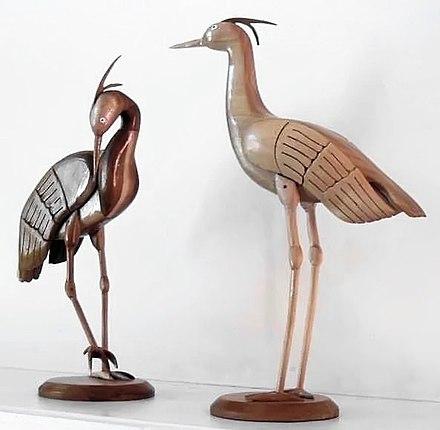
European Folk Art
European folk art reflects the diverse traditions and regional styles across the continent.
- Scandinavian Rosemaling: This decorative paintingPainting is a fundamental form of visual art that has been practiced for thousands of years. It involves applying pigment to a surface such as canvas, paper, or a wall. Painting can be explored through various styles, techniques, and mediums, each offering unique possibilities for expression and creativity. Historical Background • Ancient Beginnings: The history of painting dates back to More style features floral patterns and scrollwork, commonly seen on furniture and household items.
- Eastern European Pysanky: Intricately decorated Easter eggs from Ukraine use wax-resist techniques and vibrant dyes.
- British Morris Dancing: Costumes and props, such as decorated sticks and handkerchiefs, play a significant role in this traditional folk dance.
These examples highlight the variety and richness of European folk art traditions.
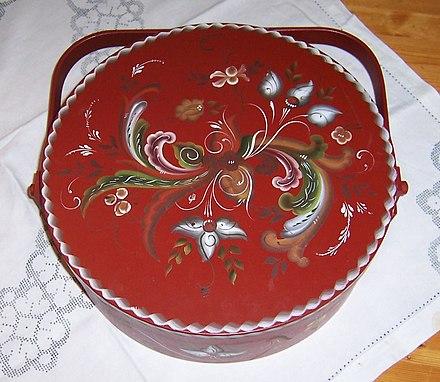
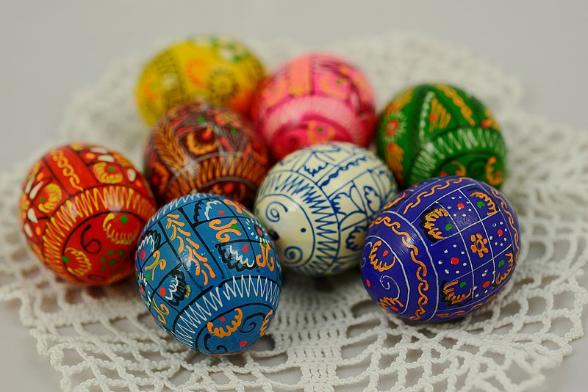
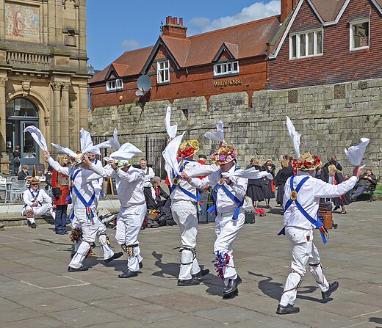
African Folk Art
African folk art is characterized by its deep connection to cultural rituals and community life.
- Masks and Sculptures: Used in ceremonies and rituals, these items often represent ancestors, spirits, or deities.
- Textiles: Kente cloth from Ghana and mud cloth from Mali feature bold patterns and symbolic designs.
- Beadwork: Jewelry and decorative items, crafted with intricate bead patterns, reflect social status and cultural identity.
African folk art serves as a powerful expression of cultural beliefs and practices.
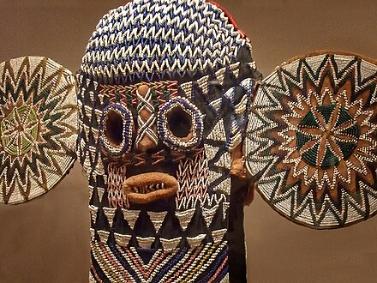
Asian Folk Art
Asian folk art encompasses a vast array of styles and techniques, reflecting the continent’s rich cultural diversity.
- Indian Block Printing: Textiles adorned with intricate patterns created using carved wooden blocks and natural dyes.
- Chinese Paper Cutting: Delicate designs, often depicting animals, flowers, and traditional symbols, used for decoration and festivals.
- Japanese Temari Balls: Embroidered thread balls, originally created as toys, now celebrated for their geometric beauty.
These traditions showcase the ingenuity and artistry of Asian folk art.

Native American Folk Art
Native American folk art is deeply rooted in cultural traditions and the natural environment.
- Basket Weaving: Skillfully crafted baskets using materials like reeds, grasses, and bark, often with intricate patterns.
- PotteryPottery, one of the most ancient and functional art forms, bridges the gap between utilitarian objects and expressive artwork. This craft has been practiced for thousands of years, evolving across cultures and epochs. The world of pottery is vast and varied, ranging from simple earthenware to ornate porcelain. Chinese Ming dynasty blue-and-white porcelain dish with a dragon The Basics of More: Pueblo potteryPottery, one of the most ancient and functional art forms, bridges the gap between utilitarian objects and expressive artwork. This craft has been practiced for thousands of years, evolving across cultures and epochs. The world of pottery is vast and varied, ranging from simple earthenware to ornate porcelain. Chinese Ming dynasty blue-and-white porcelain dish with a dragon The Basics of More features geometric designs and natural motifs, created using traditional techniques.
- Quillwork: A decorative art form using porcupine quills to embellish clothing and accessories, demonstrating meticulous craftsmanship.
These art forms preserve and celebrate Native American cultural heritage.
Latin American Folk Art
Latin American folk art blends indigenous, African, and European influences, creating vibrant and diverse expressions.
- Mexican Talavera PotteryPottery, one of the most ancient and functional art forms, bridges the gap between utilitarian objects and expressive artwork. This craft has been practiced for thousands of years, evolving across cultures and epochs. The world of pottery is vast and varied, ranging from simple earthenware to ornate porcelain. Chinese Ming dynasty blue-and-white porcelain dish with a dragon The Basics of More: Brightly colored ceramicsCeramics, the art of creating objects from clay and other raw materials, is a practice that spans cultures and millennia. From ancient pottery to contemporary sculpture, ceramics have evolved in style, technique, and function, reflecting the diverse cultures and histories of civilizations worldwide. Historical Overview Ceramics have been a part of human civilization since prehistoric times, with each region developing More with intricate patterns, originating from Spanish colonial times.
- Andean Textiles: Woven fabrics from Peru and Bolivia, featuring complex designs and symbolic colors.
- Brazilian Carnival Masks: Elaborate masks used in the lively celebrations, reflecting a mix of cultural traditions.
These examples illustrate the lively and eclectic nature of Latin American folk art.

Folk Art in Modern Times
Modern artists continue to draw inspiration from folk art, blending traditional techniques with contemporary themes.
- Revival of Traditional Crafts: Artisans and designers are revitalizing folk art traditions, ensuring their continued relevance.
- Community Art Projects: Folk art plays a crucial role in community identity, with public murals and collaborative artworks.
- Contemporary Interpretations: Artists reinterpret folk motifs in new media, bridging the gap between past and present.
Conclusion
Folk art serves as a vibrant testament to the cultural richness and creativity of communities worldwide. It reflects the values, beliefs, and everyday lives of people, providing a tangible connection to cultural heritage. As folk art continues to evolve, it remains a vital and dynamic part of our shared human experience.
